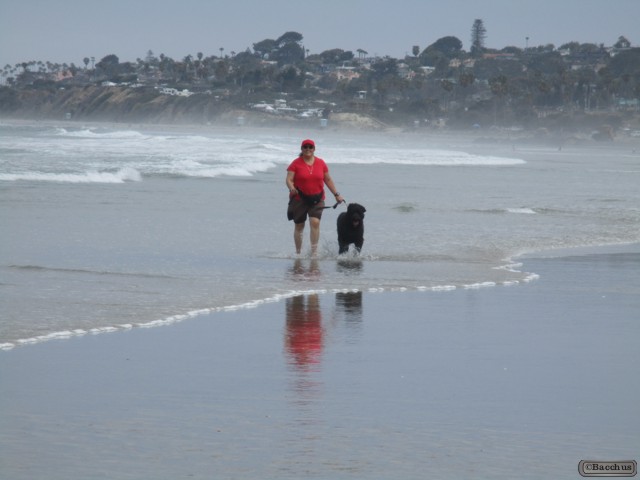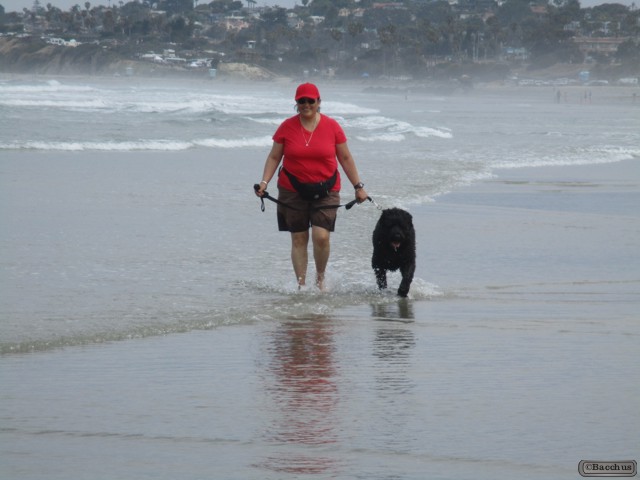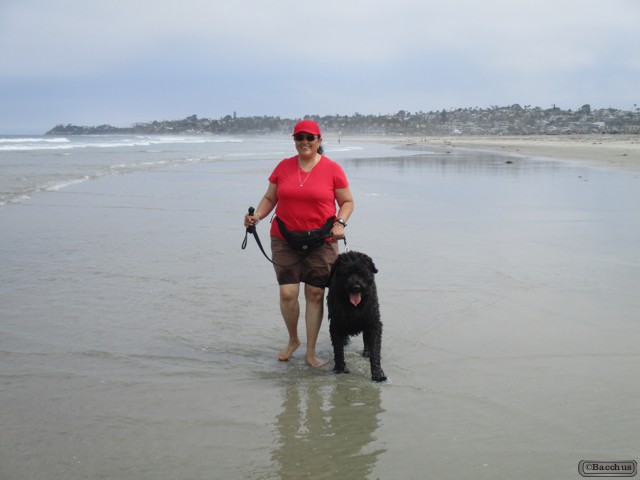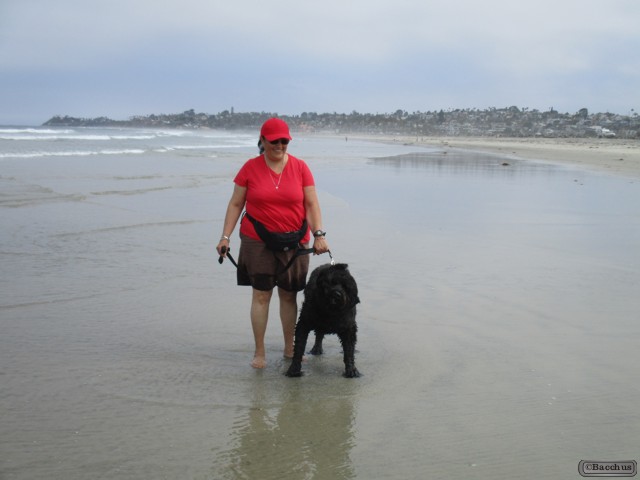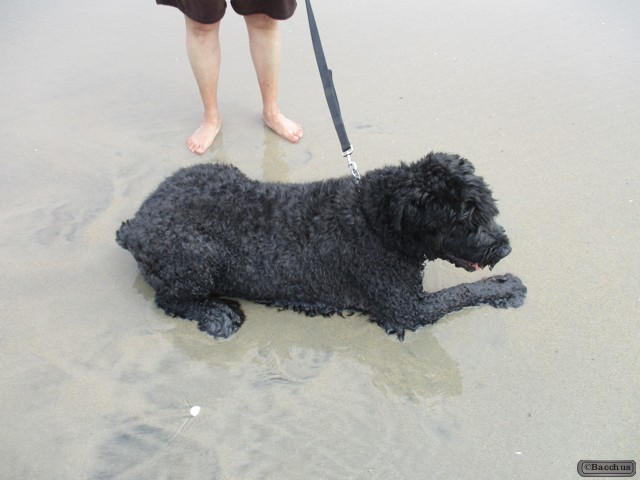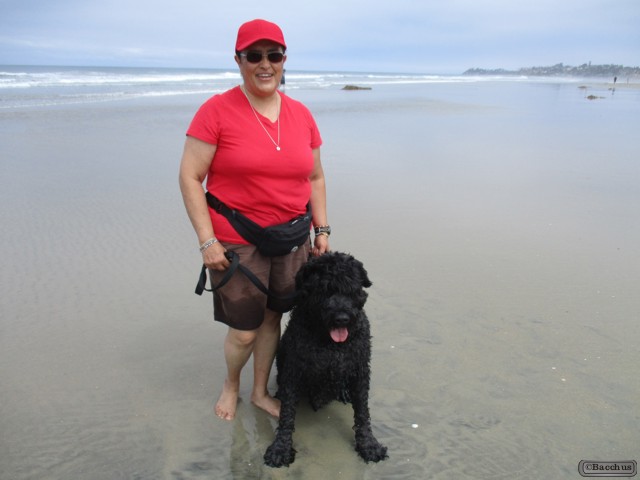Family
Family
Principles of CIT
Based on this theory, Taub developed a set of treatment principles designed to counteract learned non-use and enhance the underlying residual abilities of the impaired limb.
There were three treatment principles:
- 1. Constraint – avoid the compensation, in this case, by tying down the good limb (paw) of the animals he studied;
- 2. Forced use – require use of the impaired limb by placing the animals in circumstances where they needed to use it to achieve a meaningful goal (for example, acquiring food pellets); and
- 3. Massed practice – require the constraint and forced use every day and all day long.
In the last decade, Dr. Taub and many others have applied these three principles to humans. Results of these experiments suggest CIT is helpful in some cases. Emerging results of a randomized controlled trial by Dr. Steve Wolf of Emory University and others endorse the value of this approach at least with regard to arm rehabilitation.
CIT and Aphasia
Recently these same CIT principles have been applied to aphasia rehabilitation. In speech therapy, constraint means avoiding the use of compensatory strategies such as gesturing, drawing, writing, etc. Forced use means communicating only by talking; and massed practice refers to therapy occurring 2-4 hours per day.
The activities used in applying CIT principles to aphasia rehabilitation don’t differ substantially from what might be found in more traditional treatment approaches. However, what does differ are the demands placed on the speaker in the context of relevant, communicative exchange.
Preliminary investigations suggest that CIT principles may be effective in aphasia rehabilitation. However, this investigation is only beginning, and we are not able to say any more about its efficacy than that in some cases it appears to be helpful. Not only will further study be needed to confirm that CIT is effective with aphasia, these same studies are needed to confirm its safety. For example, some of the animal work by Dr. Tim Shallart and colleagues suggested that intensive CIT may be harmful when performed too early after a stroke. Thus the application of CIT to aphasia rehabilitation must be pursued with both enthusiasm and caution.
Evaluating new treatment approaches
Whenever a new intervention or approach to rehabilitation is considered, it is best to gather as much information as possible. Before beginning any rehabilitation program, you should determine that the provider is qualified, informed and experienced. However, when considering a product or program that is new or experimental, such as CIT applied to aphasia rehabilitation, it is equally important to evaluate how the program is portrayed and the evidence that supports it. Testimonials on promotional materials and uncontrolled case reports are considered the lowest level of evidence and should be supported by research published in professional journals.
Norma
Remember, when someone has aphasia:
- It is important to make the distinction between language and intelligence.
- Many people mistakenly think they are not as smart as they used to be.
- Their problem is that they cannot use language to communicate what they know.
- They can think, they just can’t say what they think.
- They can remember familiar faces.
- They can get from place to place.
- They still have political opinions, for example.
- They may still be able to play chess, for instance.
The challenge for all caregivers and health professionals is to provide people with aphasia a means to express what they know. Through intensive work in rehabilitation, gains can be made to avoid the frustration and isolation that aphasia can create.
For most, a stroke has a startling and life-altering effect on both the survivor and family members. All involved find themselves trying to come to terms with changes ranging from physical and sensory loss to loss of speech and language.
For many survivors, this loss or change in speech (dysarthria, apraxia) and language (aphasia) profoundly alters their social life. Ironically, research has shown that socializing is one of the best ways to maximize stroke recovery. Many experts contend that socializing should begin right away in the recovery process.
For many people living with aphasia, dysarthria or apraxia, the question then becomes: How can they socialize if they can’t communicate the way they used to?
Here are some tips you can use to begin your recovery:
- Educate yourself about aphasia so you can learn a new way to communicate.
- Close family members need to be involved so they can understand their loved one’s communication needs and begin to learn ways to facilitate speech and language.
- Experiment with strategies that facilitate social interaction during your rehabilitation.
- Many stroke survivors with communication challenges compensate by writing or drawing to supplement verbal expression, or use gestures or a picture communication book, or even a computer communication system.
Family members can facilitate communication with some simple techniques:
- Ask yes/no questions.
- Paraphrase periodically during conversation.
- Modify the length and complexity of conversations.
- Use gestures to emphasize important points.
- Establish a topic before beginning conversation.
Your environment also can help support successful socialization. Survivors have told us that it is easiest to begin practicing conversation in a one-on-one situation with someone they are comfortable with and who understands communication disorders.
In addition:
- Practice conversation in a quiet, distraction-free environment.
- As you become more confident, slowly add more conversational partners but continue to limit distractions such as background noise (music, other talking, TV).
- As you become more comfortable in one-to-one or small group interactions, explore less-controlled social situations with your speech-language pathologist, close friends and family, or other stroke survivors.
- Before you attend these gatherings, practice common things discussed in a variety of situations. For example, “How are you?” “It’s been a long time since I’ve seen you.”
Practice a few statements about current events: “Did you see the basketball game?” or “Boy, we are having beautiful weather!” - The more you practice this script, the greater your chances for success.
- Family members can prepare written cues, or organize pictures to promote interactions.
Once you achieve a level of comfort with close family and friends, you can start getting involved in the community by:
- Going to familiar large group activities such as church events or weekly social gatherings.
- Volunteering, returning to work or joining a new interest group.
- Remembering there’s no rush. You should step into this stage at a comfortable pace.
- Attending a stroke support group.
Speakeasy’s tips for communicating with speech and language limitations in social settings:
- Try, try, try to get your point across no matter what anybody says or thinks.
- If waiters speak too fast when you go out to dinner, ask them to slow down.
- Try one-on-one conversations.
- When talking on the phone with a new person, repeat, “I’m a stroke survivor… can you understand me?”
- Make a point to go out and interact with people – socializing is an important part of recovery.
- No matter who tells you that you can’t, it’s always possible to keep recovering!
Remember that the speech and language changes stroke survivors experience can last a lifetime in some form or another. As life circumstances change, and your speech and language needs evolve, reevaluate what works and what has not worked in social situations. And continue to expand your horizons.
Norma
Wernicke’s Aphasia (receptive)
People with serious comprehension difficulties have what is called Wernicke’s aphasia and:
- Often say many words that don’t make sense.
- May fail to realize they are saying the wrong words; for instance, they might call a fork a “gleeble.”
- May string together a series of meaningless words that sound like a sentence but don’t make sense.
- Have challenges because our dictionary of words is shelved in a similar region of the left hemisphere, near the area used for understanding words.
Broca’s Aphasia (expressive)
When a stroke injures the frontal regions of the left hemisphere, different kinds of language problems can occur. This part of the brain is important for putting words together to form complete sentences. Injury to the left frontal area can lead to what is called Broca’s aphasia. Survivors with Broca’s aphasia:
- Can have great difficulty forming complete sentences.
- May get out some basic words to get their message across, but leave out words like “is” or “the.”
- Often say something that doesn’t resemble a sentence.
- Can have trouble understanding sentences.
- Can make mistakes in following directions like “left, right, under, and after.”
“Car…bump…boom!” This is not a complete sentence, but it certainly expresses an important idea. Sometimes these individuals will say a word that is close to what they intend, but not the exact word; for example they may say “car” when they mean “truck.”
A speech pathologist friend mentioned to a patient that she was having a bad day. She said, “I was bitten by a dog.” The stroke survivor asked, “Why did you do that?” In this conversation, the patient understood the basic words spoken, but failed to realize that the words of the sentence and the order of the words were critical to interpreting the correct meaning of the sentence, that the dog bit the woman and not vice versa.
Global Aphasia
When a stroke affects an extensive portion of the front and back regions of the left hemisphere, the result may be global aphasia. Survivors with global aphasia:
- May have great difficulty in understanding words and sentences.
- May have great difficulty in forming words and sentences.
- May understand some words.
- Get out a few words at a time.
- Have severe difficulties that prevent them from effectively communicating.
Norma
Language is much more than words. It involves our ability to recognize and use words and sentences. Much of this capability resides in the left hemisphere of the brain. When a person has a stroke or other injury that affects the left side of the brain, it typically disrupts their ability to use language.
Through language, we:
- Communicate our inner thoughts, desires, intentions and motivations.
- Understand what others say to us.
- Ask questions.
- Give commands.
- Comment and interchange.
- Listen.
- Speak.
- Read.
- Write.
A stroke that affects the left side of the brain may lead to aphasia, a language impairment that makes it difficult to use language in those ways. Aphasia can have tragic consequences.
People with aphasia:
- May be disrupted in their ability to use language in ordinary circumstances.
- May have difficulty communicating in daily activities.
- May have difficulty communicating at home, in social situations, or at work.
- May feel isolated.
Scientists and clinicians who study how language is stored in the brain have learned that different aspects of language are located in different parts of the left hemisphere. For example, areas in the back portions allow us to understand words. When a stroke affects this posterior or back part of the left hemisphere, people can have great difficulty understanding what they hear or read.
Imagine going to a foreign country and hearing people speaking all around you. You would know they were using words and sentences. You might even have an elemental knowledge of that language, allowing you to recognize words here and there, but you would not have command of the language and couldn’t follow most conversation. This is what life is like for people with comprehension problems.
People with comprehension problems:
- Know that people are speaking to them.
- Can follow some of the melody of sentences – realizing if someone is asking a question or expressing anger.
- May have great difficulty understanding specific words.
- May have great difficulty understanding how words go together to convey a complete thought.
Norma
Current Research
Many researchers are investigating the characteristics of apraxia of speech and the most effective treatment methods. Below are a couple of the recent findings:
- Sound Production Treatment: Articulatory-kinematic treatments have the strongest evidence of their use in treating Acquired Apraxia of Speech. These treatments use the facilitation of movement, positioning, timing, and articulators to improve speech production. Sound Production Treatment (SPT) is an articulatory-kinematic treatment that has received more research than many other methods. It combines modeling, repetition, minimal pair contrast, integral stimulation, articulatory placement cueing, and verbal feedback. It was developed to improve the articulation of targeted sounds in the mid-1990s. SPT shows consistent improvement of trained sounds in trained and untrained words. The best results occur with eight to ten exemplars of the targeted sound to promote generalization to untrained exemplars of trained sounds. In addition, maintenance effects are the strongest with 1-2 months post-treatment with sounds that reached high accuracy during treatment. Therefore, the termination of treatment should not be determined by performance criteria, and not by the number of sessions the client completes, in order to have the greatest long-term effects. While there are many parts of SPT that should receive further investigation, it can be expected that it will improve the production of targeted sounds for speakers with apraxia of Speech.
- Repeated Practice & Rate/Rhythm Control Treatments: Julie Wambaugh’s research focuses on clinically applicable treatments for acquired apraxia of speech. She recently published an article examining the effects of repeated practice and rate/rhythm control on sound production accuracy. Wambaugh and colleagues studied the effects of such treatment for 10 individuals with acquired apraxia of speech. The results indicate that repeated practice treatment results in significant improvements in articulation for most clients. In addition, rate/rhythm control helped some clients, but not others. Thus, incorporating repeated practice treatment into therapy would likely help individuals with AOS.
Norma
Management
In cases of acute AOS (stroke), spontaneous recovery may occur, in which previous speech abilities reappear on their own. All other cases of acquired AOS require a form of therapy; however the therapy varies with the individual needs of the patient. Typically, treatment involves one-on-one therapy with a speech language pathologist (SLP). For severe forms of AOS, therapy may involve multiple sessions per week, which is reduced with speech improvement. Another main theme in AOS treatment is the use of repetition in order to achieve a large amount of target utterances, or desired speech usages.
There are various treatment techniques for AOS. One technique, called the Linguistic Approach, utilizes the rules for sounds and sequences. This approach focuses on the placement of the mouth in forming speech sounds. Another type of treatment is the Motor-Programming Approach, in which the motor movements necessary for speech are practiced. This technique utilizes a great amount of repetition in order to practice the sequences and transitions that are necessary in between production of sounds.
Research about the treatment of apraxia has revealed four main categories: articulatory-kinematic, rate/rhythm control, intersystemic facilitation/reorganization treatments, and alternative/augmentative communication.
- Articulatory-kinematic treatments almost always require verbal production in order to bring about improvement of speech. One common technique for this is modeling or repetition in order to establish the desired speech behavior. Articulatory-kinematic treatments are based on the importance of patients to improve spatial and temporal aspects of speech production.
- Rate and rhythm control treatments exist to improve errors in patients’ timing of speech, a common characteristic of Apraxia. These techniques often include an external source of control like metronomic pacing, for example, in repeated speech productions.
- Intersystemic reorganization/facilitation techniques often involve physical body or limb gestural approaches to improve speech. Gestures are usually combined with verbalization. It is thought that limb gestures may improve the organization of speech production.
- Finally, alternative and augmentative communication approaches to treatment of apraxia are highly individualized for each patient. However, they often involve a “comprehensive communication system” that may include “speech, a communication book aid, a spelling system, a drawing system, a gestural system, technologies, and informed speech partners”.
One specific treatment method is referred to as PROMPT. This acronym stands for Prompts for Restructuring Oral Muscular Phonetic Targets, and takes a hands on multidimensional approach at treating speech production disorders. PROMPT therapists integrate physical-sensory, cognitive-linguistic, and social-emotional aspects of motor performance. The main focus is developing language interaction through this tactile-kinetic approach by using touch cues to facilitate the articulatory movements associated with individual phonemes, and eventually words.
One study describes the use of electropalatography (EPG) to treat a patient with severe acquired apraxia of speech. EPG is a computer-based tool for assessment and treatment of speech motor issues. The program allows patients to see the placement of articulators during speech production thus aiding them in attempting to correct errors. Originally after two years of speech therapy, the patient exhibited speech motor and production problems including problems with phonation, articulation, and resonance. This study showed that EPG therapy gave the patient valuable visual feedback to clarify speech movements that had been difficult for the patient to complete when given only auditory feedback.
While many studies are still exploring the various treatment methods, a few suggestions from ASHA for treating apraxia patients include the integration of objective treatment evidence, theoretical rationale, clinical knowledge and experience, and the needs and goals of the patient.
Norma
Causes
Apraxia of speech can be caused by impairment to parts of the brain that control muscle movement and speech. However, identifying a particular region of the brain in which AOS always occurs has been controversial. Various patients with damage to left subcortical structures, regions of the insula, and Broca’s area have been diagnosed with AOS. Most commonly it is triggered by vascular lesions, but AOS can also arise due to tumors and trauma.
Acute Apraxia of Speech
Stroke-associated AOS is the most common form of acquired AOS, making up about 60% of all reported acquired AOS cases. This is one of the several possible disorders that can result from a stroke, but only about 11% of stroke cases involve this disorder. Brain damage to the neural connections, and especially the neural synapses, during the stroke can lead to acquired AOS. Most cases of stroke-associated AOS are minor, but in the most severe cases, all linguistic motor function can be lost and must be relearned. Since most with this form of AOS are at least fifty years old, few fully recover to their previous level of ability to produce speech.
Other disorders and injuries of the brain that can lead to AOS include (traumatic) dementia, progressive neurological disorders, and traumatic brain injury.
Progressive Apraxia of Speech
Recent research has established the existence of primary progressive apraxia of speech caused by neuroanatomic motor atrophy. For a long time, this disorder was not distinguished from other motor speech disorders such as dysarthria and in particular primary progressive aphasia. Many studies have been done trying to identify areas in the brain in which this particular disorder occurs or at least to show that it occurs in different areas of the brain than other disorders. One study observed 37 patients with neurodegenerative speech disorders to determine whether or not it is distinguishable from other disorders, and if so where in the brain it can be found. Using speech and language, neurological, neuropsychological and neuroimaging testing, the researchers came to the conclusion that PAS does exist and that it correlates to superior lateral premotor and supplementary motor atrophy. However, because PAS is such a rare and recently discovered disorder, many studies do not have enough subjects to observe to make data entirely conclusive.
Norma
Diagnosis
Apraxia of speech can be diagnosed by a speech language pathologist (SLP) through specific exams that measure oral mechanisms of speech. The oral mechanisms exam involves tasks such as pursing lips, blowing, licking lips, elevating the tongue, and also involves an examination of the mouth. A complete exam also involves observation of the patient eating and talking. SLPs do not agree on a specific set of characteristics that make up the apraxia of speech diagnosis,[citation needed] so any of the characteristics from the section above could be used to form a diagnosis. Patients may be asked to perform other daily tasks such as reading, writing, and conversing with others. In situations involving brain damage, an MRI brain scan also helps identify damaged areas of the brain.
A differential diagnosis must be used in order to rule out other similar or alternative disorders. Although disorders such as expressive aphasia, conduction aphasia, and dysarthria involve similar symptoms as apraxia of speech, the disorders must be distinguished in order to correctly treat the patients. While AOS involves the motor planning or processing stage of speech, aphasic disorders can involve other language processes.
According to Ziegler et al., this difficulty in diagnosis derives from the unknown causes and function of the disorder, making it hard to set definite parameters for AOS identification. Specifically, he explains that oral-facial apraxia, dysarthria, and aphasic phonological impairment are the three distinctly different disorders that cause individuals to display symptoms that are often similar to those of someone with AOS, and that these close relatives must be correctly ruled out by a Speech Language Pathologist before AOS can be given as a diagnosis. In this way, AOS is a diagnosis of exclusion, and is generally recognized when all other similar speech sound production disorders are eliminated.
Possible Aphasias
AOS and expressive aphasia (also known as Broca’s aphasia) are commonly mistaken as the same disorder mainly because they often occur together in patients. Although both disorders present with symptoms such as a difficulty producing sounds due to damage in the language parts of the brain, they are not the same. The main difference between these disorders lies in the ability to comprehend spoken language; patients with apraxia are able to fully comprehend speech, while patients with aphasia are not always fully able to comprehend others’ speech.
Conduction aphasia is another speech disorder that is similar to, but not the same as, apraxia of speech. Although patients who suffer from conduction aphasia have full comprehension of speech, as do AOS sufferers, there are differences between the two disorders. Patients with conduction aphasia are typically able to speak fluently, but they do not have the ability to repeat what they hear.
Similarly, dysarthria, another motor speech disorder, is characterized by difficulty articulating sounds. The difficulty in articulation does not occur due in planning the motor movement, as happens with AOS. Instead, dysarthria is caused by inability in or weakness of the muscles in the mouth, face, and respiratory system.
Norma
Characteristics
Apraxia of speech (AOS) is a neurogenic communication disorder affecting the motor programming system for speech production. Individuals with AOS demonstrate difficulty in speech production, specifically with sequencing and forming sounds. The Levelt model describes the speech production process in the following three consecutive stages: conceptualization, formulation, and articulation. According to the Levelt model, apraxia of speech would fall into the articulation region. The individual does not suffer from a language deficiency, but has difficulty in the production of language in an audible manner. Notably, this difficulty is limited to vocal speech, and does not affect signed language production. The individual knows exactly what they want to say, but there is a disruption in the part of the brain that sends the signal to the muscle for the specific movement. Individuals with acquired AOS demonstrate hallmark characteristics of articulation and prosody (rhythm, stress or intonation) errors. Coexisting characteristics may include groping and effortful speech production with self-correction, difficulty initiating speech, abnormal stress, intonation and rhythm errors, and inconsistency with articulation.
Wertz et al., (1984) describe the following five speech characteristics that an individual with apraxia of speech may exhibit:
Effortful trial and error with groping
Groping is when the mouth searches for the position needed to create a sound. When this trial and error process occurs, sounds may be held out longer, repeated or silently voiced. In some cases, an AOS sufferer may be able to produce certain sounds on their own, easily and unconsciously, but when prompted by another to produce the same sound the patient may grope with their lips, using volitional control (conscious awareness of the attempted speech movements), while struggling to produce the sound.
Self correction of errors
Patients are aware of their speech errors and can attempt to correct themselves. This can involve distorted consonants, vowels, and sound substitutions. People with AOS often have a much greater understanding of speech than they are able to express. This receptive ability allows them to attempt self correction.
Abnormal rhythm, stress and intonation
Sufferers of AOS present with prosodic errors which include irregular pitch, rate, and rhythm. This impaired prosody causes their speech to be: too slow or too fast and highly segmented (many pauses). An AOS speaker also stresses syllables incorrectly and in a monotone. As a result, the speech is often described as ‘robotic’. When words are produced in a monotone with equal syllabic stress, a word such as ‘tectonic’ may sound like ‘tec-ton-ic’ as opposed to ‘tec-TON-ic’. These patterns occur even though the speakers are aware of the prosodic patterns that should be used.
Inconsistent articulation errors on repeated speech productions of the same utterance
When producing the same utterance in different instances, a person with AOS may have difficulty using and maintaining the same articulation that was previously used for that utterance. On some days, people with AOS may have more errors, or seem to “lose” the ability to produce certain sounds for an amount of time. Articulation also becomes more difficult when a word or phrase requires an articulation adjustment, in which the lips and tongue must move in order to shift between sounds. For example, the word “baby” needs less mouth adjustment than the word “dog” requires, since producing “dog” requires two tongue/lips movements to articulate.
Difficulty initiating utterances
Producing utterances becomes a difficult task in patients with AOS, which result in various speech errors. The errors in completing a speech movement gesture may increase as the length of the utterance increases. Since multisyllabic words are difficult, those with AOS use simple syllables and a limited range of consonants and vowels.
Norma

